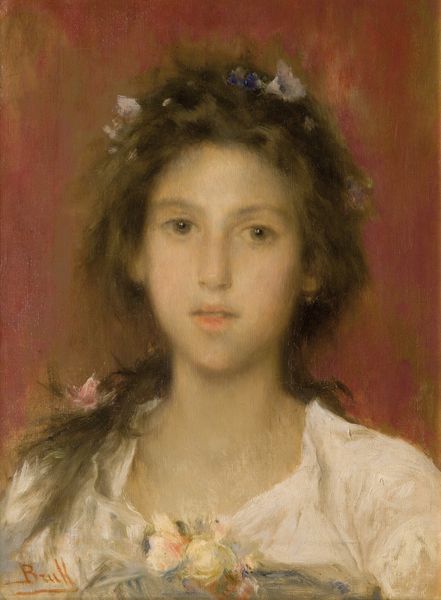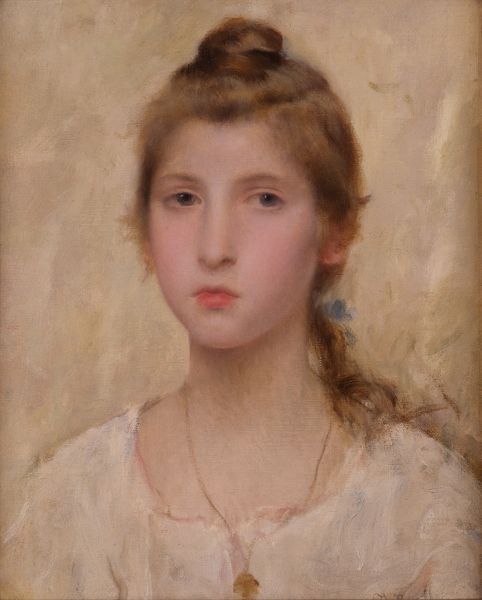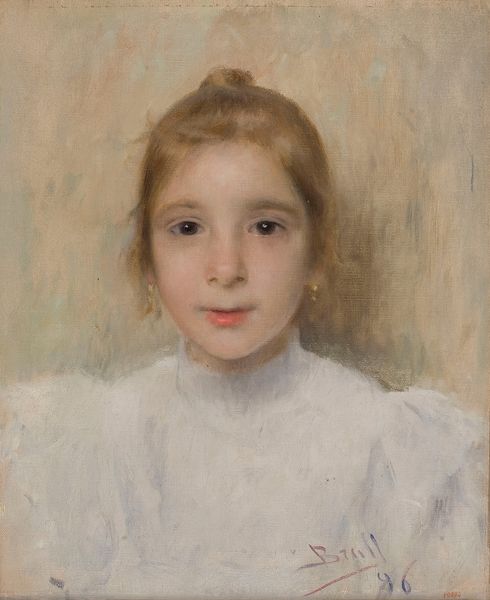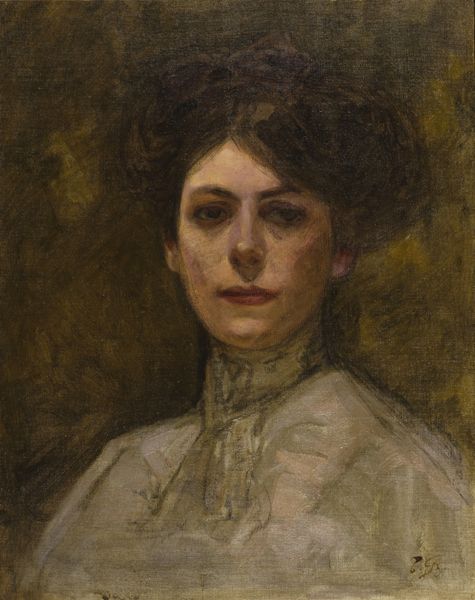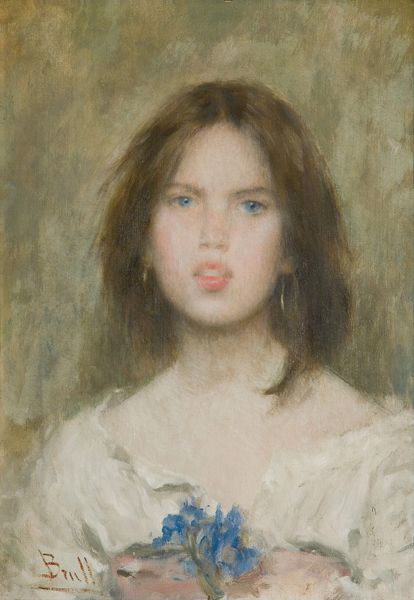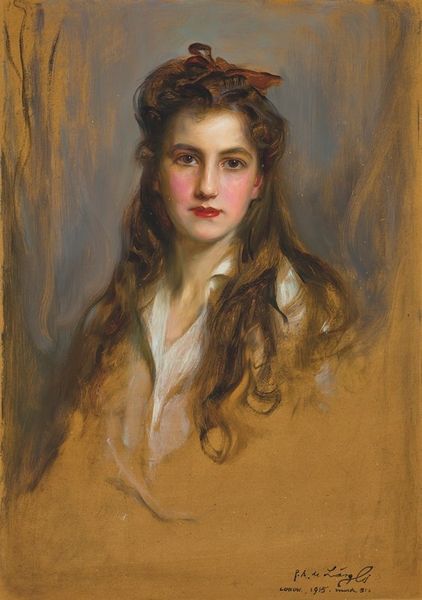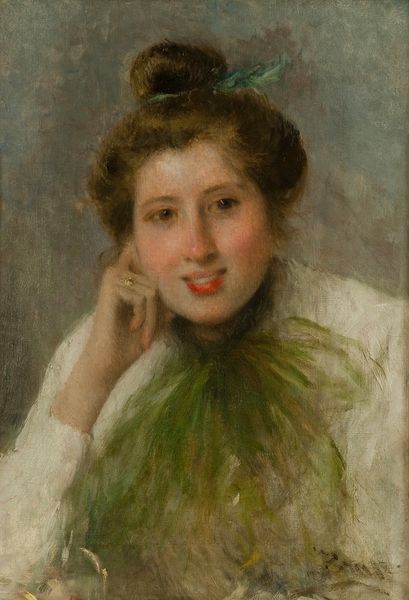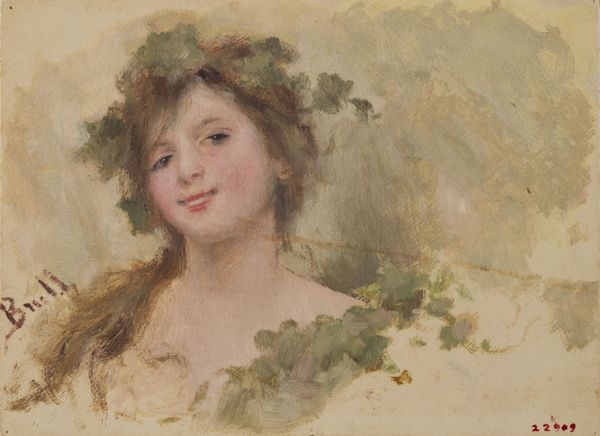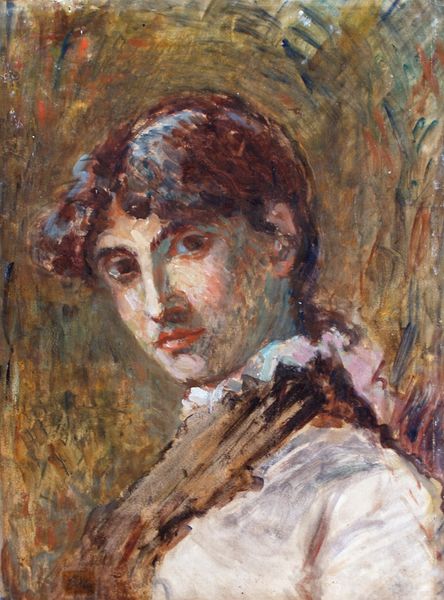
Copyright: Public domain
Curator: I'm drawn to the way Joan Brull captures the soft vulnerability of youth in "Rosalia," painted in 1894. There's something profoundly touching in her gaze. Editor: It's definitely wistful. The hazy background, the gentle pink in her cheeks—it gives her this dreamlike quality, as if she’s a character from a forgotten fairytale. Curator: Absolutely. The Art Nouveau influence is evident here, wouldn’t you agree? See how he uses light to soften her features? Almost romantic in the traditional sense. It feels… tender. Editor: And the title itself. "Rosalia"—roses are, of course, an enduring symbol of love, but also of transience, of beauty that fades. Is this capturing a fleeting moment, perhaps? Curator: Precisely. Brull was fascinated by capturing fleeting moments of the soul, those transient emotions that flit across a face. You see it in the delicate brushstrokes around her eyes—the depth he manages to create with subtle tonal variations. Editor: She is the archetypal melancholic muse. It’s interesting how the scarf around her neck frames her face almost like a halo. It’s soft but adds a sense of structure to a rather impressionistic presentation. It could signify virtue, purity—concepts tied to portrayals of young women during this period. Curator: Fascinating observation. Also, note the subtle signature—"Brull"—placed low on the left. He isn't obtrusive with his presence. Editor: Right. And that contributes to the feeling that we’ve stumbled upon a secret, intimate moment. This isn’t just a painting; it’s a glimpse into someone’s interior world. Curator: Perhaps. It invites speculation—who was Rosalia? What were her hopes, her dreams? The painting offers no concrete answers, only a tender invitation to contemplate. Editor: In its own quiet way, "Rosalia" remains a potent symbol of yearning and idealized beauty.
Comments
No comments
Be the first to comment and join the conversation on the ultimate creative platform.
